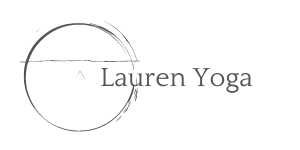Unlocking Nervous System Integration: The Healing Power of Yoga and Meditation
In today's fast-paced world, the constant barrage of stimuli and stress can leave our nervous systems overwhelmed and fragmented. Through yoga and meditation, we can find a path to integration, healing, and wholeness. Our practice offers profound benefits for our nervous system, promoting overall wellness and a sense of harmony within ourselves. Our practice can be one of our main tools for “unsticking” sticky experiences in the body.
The Role of Nervous System Integration
The nervous system plays a vital role in transmitting signals between different parts of the body and the brain. When we experience traumatic or stressful events, these experiences can get "stuck" or “hooked” in our nervous system, leading to emotional and physical imbalances. Integrating these experiences is essential for healing and restoring equilibrium within.
Yoga: The Journey to Integration
The trifecta in yoga of alignment in the body, utilizing breathing, and directing attention on purpose is the path to integration of our experiences. That trifecta encourages the release of tension and emotional blockages stored within the body. This process facilitates the integration of past experiences, promoting healing and a sense of unity between mind, body, and spirit.
Meditation: Finding Stillness
Meditation allows us a space for quiet introspection. By sitting and observing our thoughts without judgment, we create an opportunity to process and integrate experiences. Meditation stimulates the parasympathetic nervous system, which counteracts the "fight or flight" response, inducing a state of calm and relaxation. This state allows the nervous system to unwind, promoting healing and emotional well-being.
The Synergy of Yoga and Meditation
The combination of yoga and meditation creates a powerful synergy that facilitates nervous system integration. Yoga prepares the body by releasing physical tension, while meditation guides the mind to let go of emotional burdens. Together, they create a holistic approach to healing and wholeness, fostering a sense of inner peace and resilience.
Our practice is not about perfection, or showing up every single day for 60 minutes. There's no doing it right or wrong, there is no good or bad. There is the structure of the practices, and then there is the nuance of our lives. The key is to find what works for you and stick with it. Do it enough where the thread starts to become part of the fabric of who you are, thus tapping into the inherent capacity of our body and mind to find balance and wellness.
“Emergence never happens all at once. It is a slow stepping into the expanded capacity of your next self. You may need practice at releasing in those places you've grown accustomed to bracing which, like a tight swaddle, was comforting in its limits. But when the time to remain hidden comes to its natural end, you must begin to inhabit your new dimensionality. Breathe into the fullness of your gaining altitude and consider that what presents itself as fear may actually be exhilaration. As your future approaches you, worry less how it may receive you and say a prayer instead for your becoming approachable."
Excerpt from “Belonging: Remembering Ourselves Home” by Toko-pa Turner
Book Recommendations for August:
Trusting the Gold by Tara Brach
Pause, Rest, Be: Stillness Practices for Courage in Times of Change by Octavia Raheem
Podcast Recommendations:
I am LOVING this 12-minute meditation from my teacher Tara Brach
Practice You Podcast: on the golden moments of silence
Hurry Slowly: Bad Habit Loops with Jocelyn K. Glei (this was VERY insightful for me)

